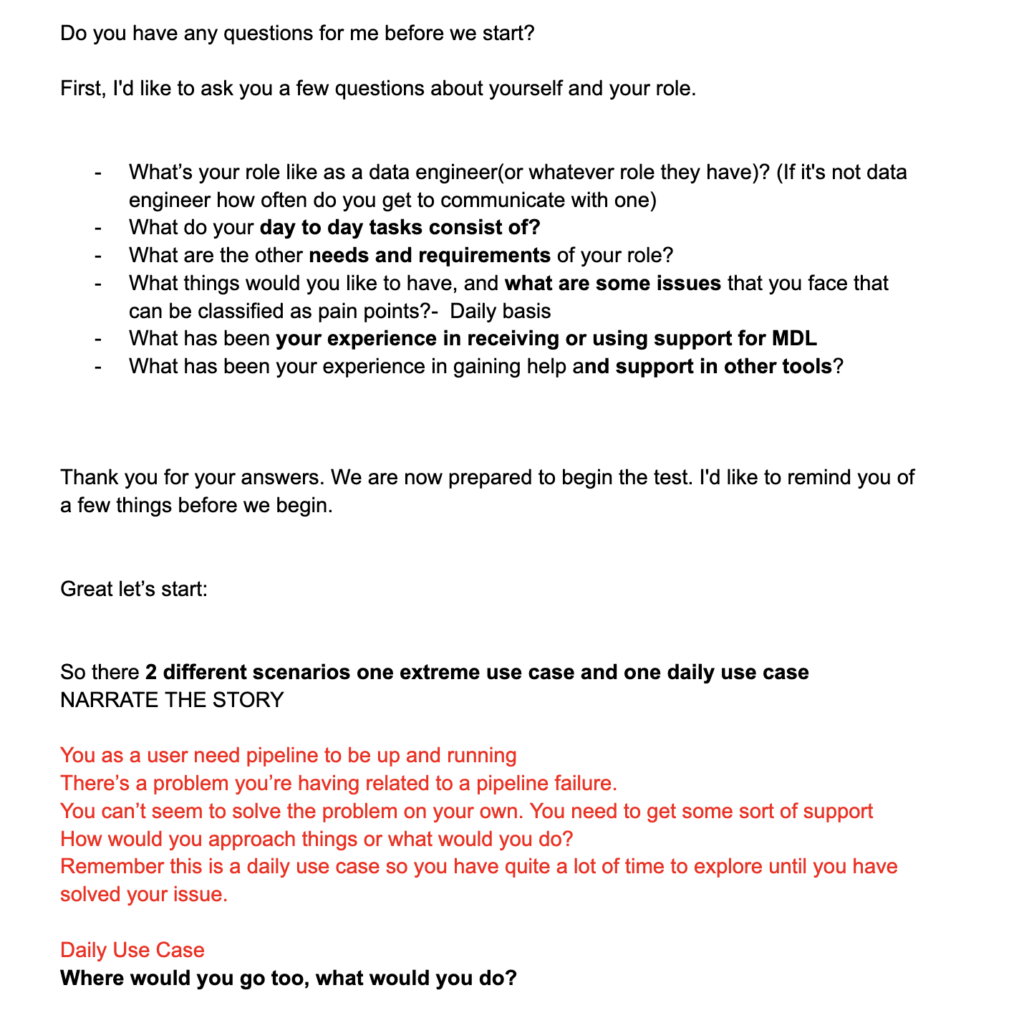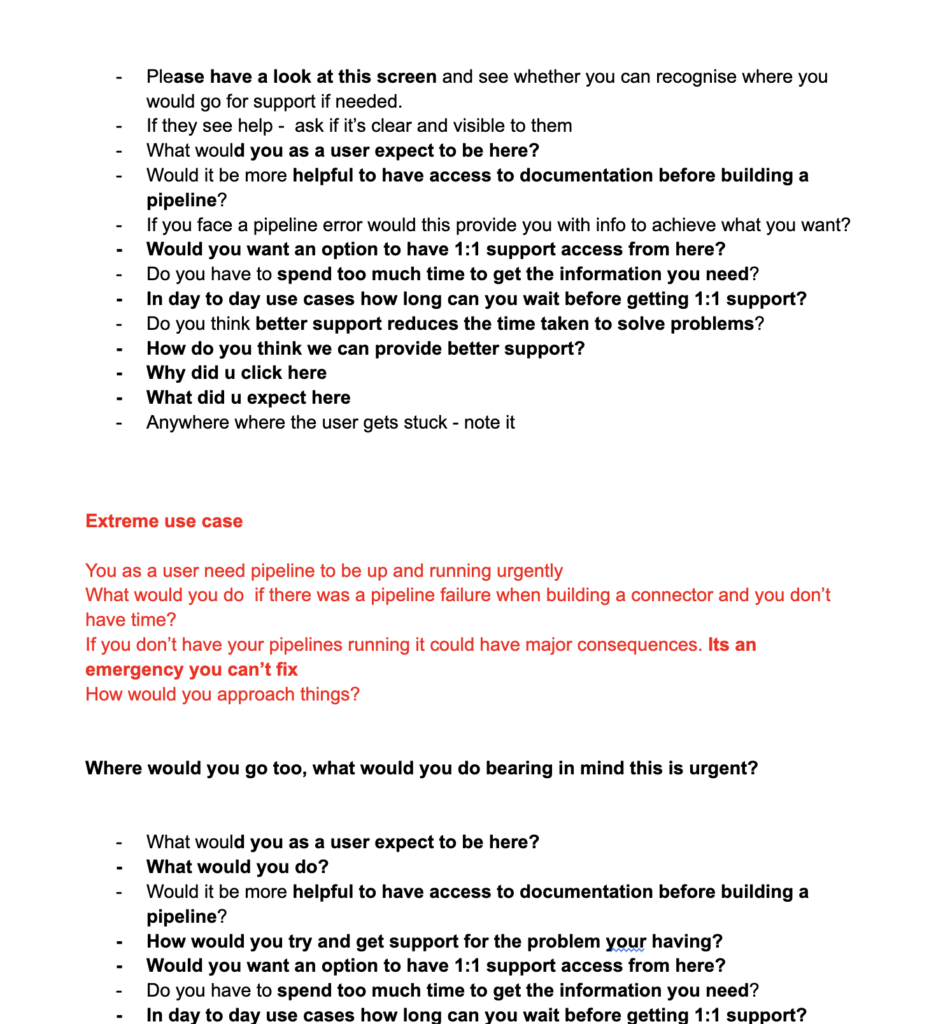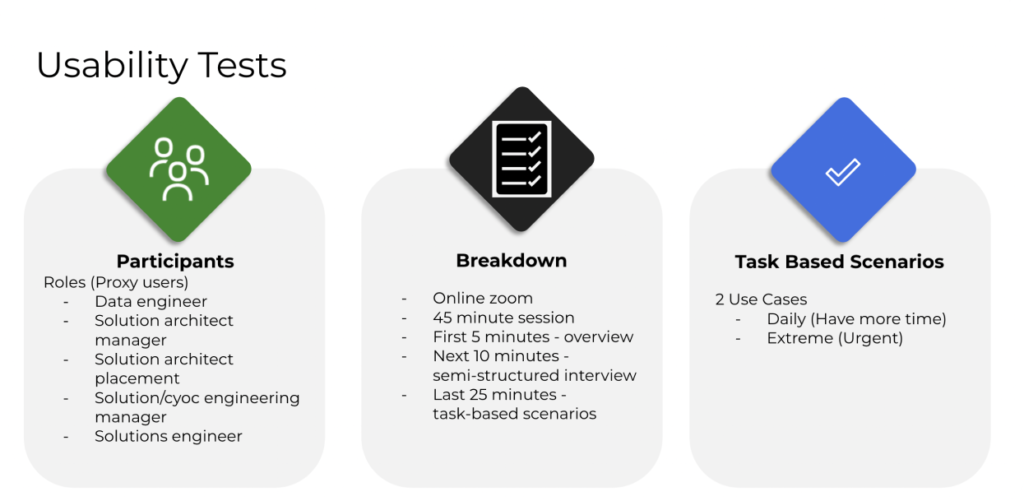Explore my portfolio
MDL Research Project
Overview
Summary
Role: UX Researcher/Product Designer
Collaboration: Internal Matillion Product Team
Focus: Research planning, facilitation, user testing, analysis
Tools: Calendly, Confluence, Empathy Mapping, Usability Testing, Affinity Diagramming
As part of a strategic research initiative, I investigated the inefficiencies data engineers face when debugging and maintaining pipelines in Matillion’s Data Loader (MDL). Through empathy mapping, usability tests, and heuristic reviews, I provided actionable insights to improve the MDL support system.
Problem Statement
Matillion’s internal support data and user feedback revealed a persistent pain point:
Data engineers were spending excessive time fixing, debugging, and maintaining pipelines.
This raised questions:
Is the current support system aligned with the real needs of data engineers?
What specific areas of the MDL product are breaking the user flow or causing time loss?
How might we improve documentation, UX support, or tooling to reduce this burden?
These questions guided the design of a research study focused on exploring user pain points and delivering clear recommendations.
Research Goals
Understand user personas (primarily data engineers) working with MDL
Identify knowledge gaps and recurring pain points in debugging/maintenance
Evaluate the effectiveness of the MDL support system (documentation, UI, workflows)
Derive recommendations for reducing time and friction spent on fixes
Research Process
Empathy Mapping:
Built a persona-specific empathy map to visualise what users think, feel, say, and do
Focused on the “Data Engineer” role and mapped recurring frustrations around pipeline reliability and complexity
Formulating the Research Question:
“How can we improve the support experience in MDL so that data engineers spend less time debugging, maintaining, and fixing pipelines?”
This helped scope the research plan and select appropriate methods.
Secondary Research
Heuristic Evaluation:
Reviewed the current MDL support experience (e.g. help centre, in-product help, documentation)
Assessed consistency, findability, and clarity of support materials using heuristic criteria
Documentation Review:
Analysed Confluence documentation and internal guides to assess completeness and user alignment
Ideation & Design
Early Collaboration:
Partnered with engineers to explore feasible ways to simplify complexity
Identified a pattern: most confusion stemmed from not knowing how each strategy worked in practice
Key Design Decisions:
Introduced an eight-tile layout, each tile representing a pagination strategy
Included code snippet previews on each tile for visual understanding
Enabled inline configuration once a strategy is selected
Designed a preview feature to show users how their selected setup would behave using live API data
Prioritised usability principles such as reducing clicks and following Nielsen Norman heuristics
Primary Research
Usability Testing:
Planned and conducted 5 moderated usability tests with internal data engineers
Used Calendly for participant scheduling
Created a structured script focusing on:
Discoverability of help materials
Steps taken when debugging pipelines
Friction points in existing MDL (Matillion data loader) support interactions


*An outline of the script used within the usability tests*
Challenges:
Carefully avoided leading questions, ensuring neutral facilitation
Required flexibility in adapting the script based on participant reactions
Created a safe space for open feedback on internal tools
Outcomes & Insights
Analysis:
- Used an Affinity Diagram to categorise and prioritise key themes:
Lack of in-context support and tooltips
Overwhelming and scattered documentation
No clear debugging flow or triage checklist
Ambiguous error messaging
Key Recommendations:
Embed contextual support directly within MDL (e.g. inline hints, alerts)
Consolidate documentation into a step-by-step debugging guide
Introduce a “Common Fixes” section informed by real user cases
Develop a lightweight debug checklist UI to assist engineers during troubleshooting

Reflection & Impact
This project not only informed product support strategy for MDL, but also served as a real-world test bed for:
Research planning and execution
Stakeholder alignment
Quantifying qualitative data into recommendations
Learnings
User confidence comes from context and control—clear language and visual examples matter deeply when designing for technical workflows
Collaborating early with engineering ensures design feasibility and speeds up development alignment
A modular UI design with consistent interaction patterns supports both scalability and usability
Academic Impact
This project directly supported my preparation for an upcoming dissertation on UX in technical enterprise tools, providing hands-on experience in participant recruitment, facilitation, and synthesis.
Next Steps:
Share insights with Product and Engineering to define support system MVP upgrades
Explore introducing UX metrics (e.g. Time to Fix, Number of Support Searches) to validate success
Consider embedding a feedback loop within MDL for users to report unclear errors in real time




